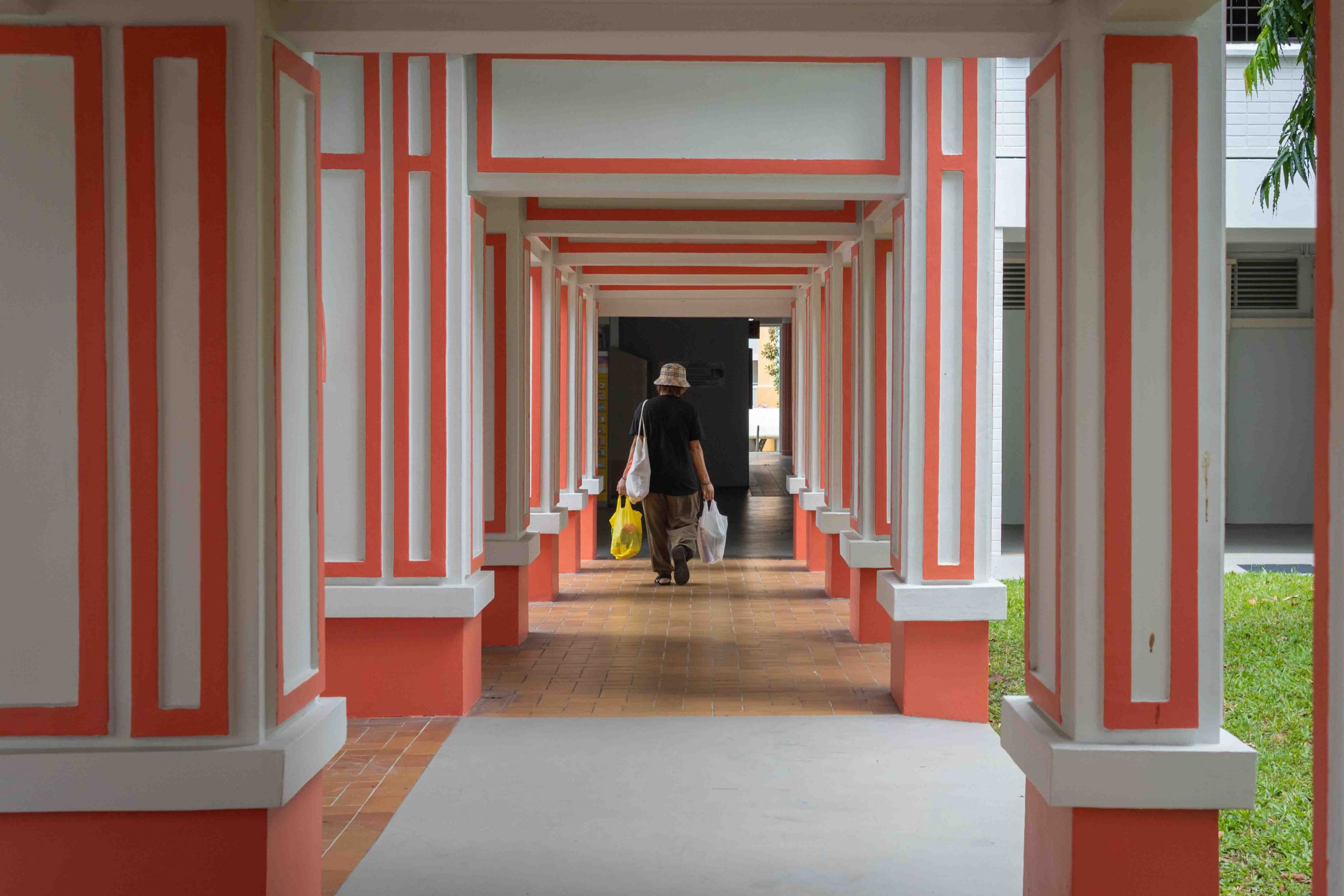Top image: Mei Hui Lim / RICE file photo
This story is part of RICE Media’s Storytellers initiative, a mentorship programme for budding content creators to learn about the art of creative non-fiction. This piece is a product of a partnership between RICE Media and Singapore Management University (SMU) for its Professional Writing module.
At the heart of my childhood memories stands an enchanting yet empty space, brimming with endless opportunity: the void deck under my old block.
Every pillar held the remnants of my childlike delight as I darted around during games of hide and seek with my family. The excitement of finding the perfect spot, the thrill of thinking I was undefeatable, and the shared laughter upon being caught—these are moments I still reminisce about.
My family did not have much then, but those were the happiest years of my life.
Long rope jumping with friends also became a weekly ritual at my void deck. As each of us took turns swinging the rope, the rest jumped in unison. The rhythmic thud of the long rope hitting the concrete floor, our bursts of laughter, and the fading of our homework worries formed the sounds of our childhood.
No matter the countless rounds played in the same space, the thrill always remained fresh.
Much like the Room of Requirement in the wizarding world of Harry Potter, which transforms itself to fulfil the needs of its seeker, void decks share a similar versatility. They cater to the desires of various ‘seekers’ who seek to use them.
Though seemingly ordinary, these non-magical spaces hold their unique charm.
From fostering casual neighbourly chats to football matches and hosting significant life milestones like weddings, void decks shine with everlasting opportunity.
Every moment is an invitation for a new adventure. A new chapter. A new memory.
All while being an empty space.
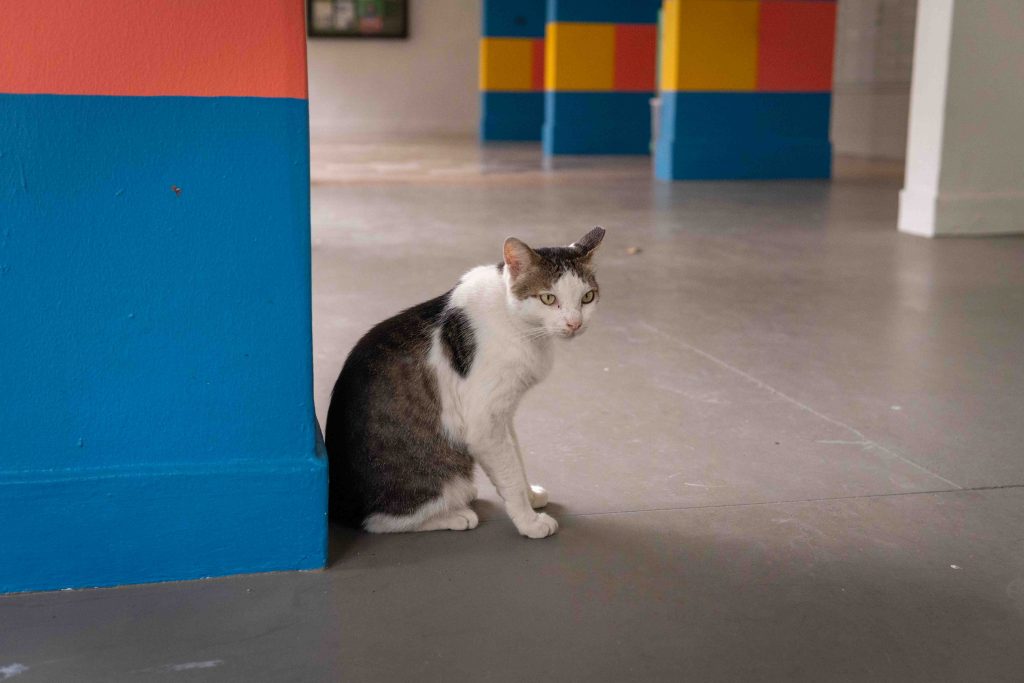
Pillars of Society
The term ‘void deck’ first appeared in Singapore’s local newspapers in the 1970s, when the Housing Development Board (HDB) began constructing its public housing on ‘pillars’ to liberate ground-level space.
In contrast to the 1960s, when homes or shops predominantly occupied the ground floors of older HDB blocks, the introduction of void decks aimed to “create opportunities for residents to meet, interact and bond through the regular use of shared common spaces.”
Void decks offered a “sense of relief” in our densely built city and provided residents with a space to hold their own “social functions, celebrations, and funeral rites.”
Over the years, void decks have become essential spaces for nurturing community ties and fostering racial integration. They function as venues for social and recreational activities and present opportunities for residents of different backgrounds, age groups, and races to come together.
Between the 1970s and the 1980s, void decks primarily served as gathering alternatives for residents newly resettled from kampong villages who needed time to adjust to the new high-rise and high-density living environment.
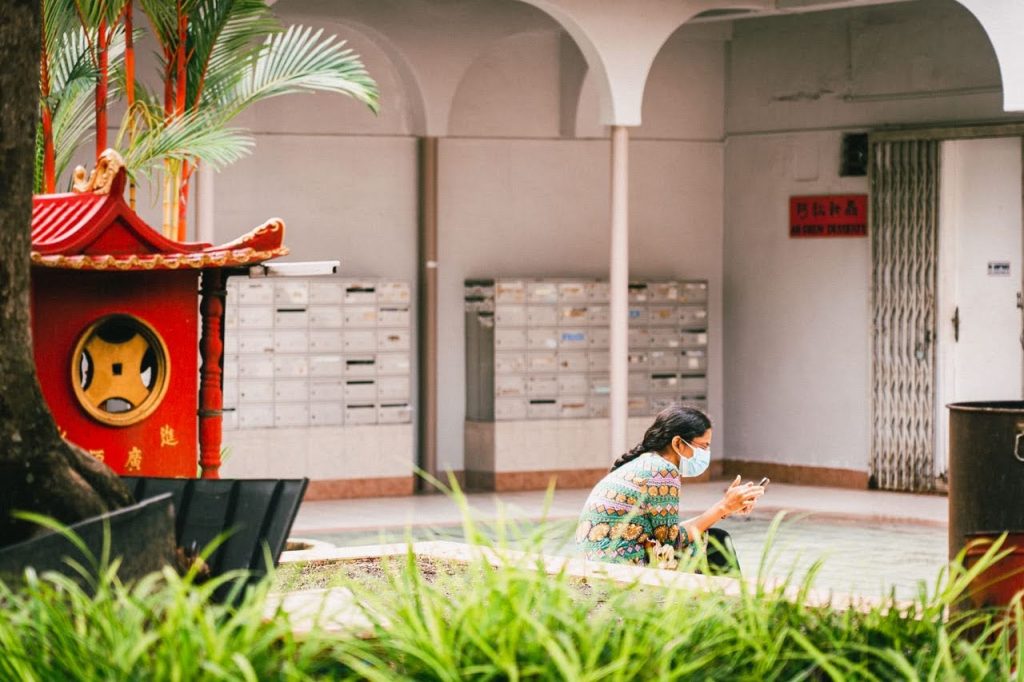
Today, void decks continue to hold a special place in our hearts. To some, it is a popular hangout spot. To others, it transforms into a limitless playground constrained only by their imagination. To those who simply pass through, void decks have become a mere transitional space.
This makes void decks so beautifully significant yet so unimportant. Unknowingly or not, void decks have become a canvas upon which we all paint.
The Canvas of Our Collective Stories
When I arrived at my neighbourhood void deck in the early hours of the morning, it was in perfect tranquillity.
The air was calm and quiet, with the occasional chirp of a Javan mynah in the distance.
The empty benches and hushed corners were a blank canvas, awaiting the promises of a new day.
Just as the world seemed to pause, a soft “ding!” gently disrupted the silence. As the elevator doors opened, a child stepped out of the elevator with a backpack over his shoulders and began walking towards the nearby bus stop.
With a gentle hum, the elevator whisked away to ferry more passengers.
The day has begun.
Quickly, the void deck grew alive with the energy of the morning rush, becoming a transitional space for individuals and families to embark on their daily routines. From children heading to school to adults commuting to work, the void deck welcomed everyone who passed by.
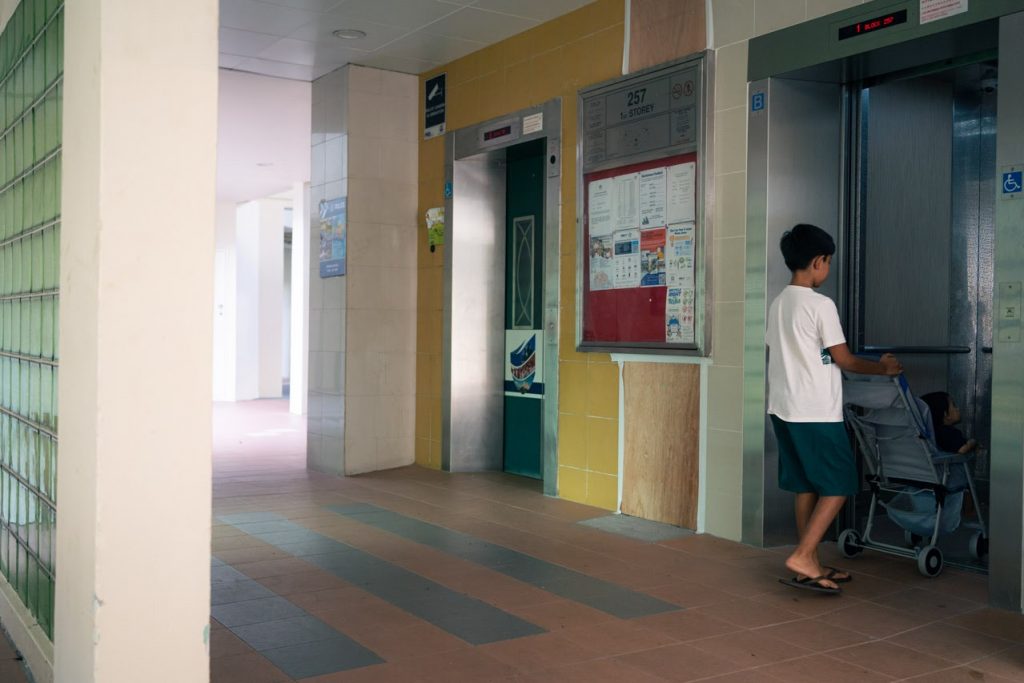
As the morning progressed, more people appeared, either sitting at the void deck or passing through to run errands.
Ms Tan, 81, and Ms Lee*, 85, close friends who reside in a nearby neighbourhood, are examples of those who found comfort at the void deck. After their regular trip to the wet market for groceries, they often settled at the void deck to rest and catch up before heading back home.
Each with a grocery trolley in hand, both retirees shared how they would coordinate their shopping plans with a simple phone call every morning. Sometimes opting for a short bus ride and other times enjoying a leisurely walk, their morning routines have become a treasured tradition, offering precious time together under the void deck.
As I walk on, I chance upon two basketball enthusiasts, Ashraf, 25, and Kar Herng, 22, who were resting at the void deck of another block. Surrounded by duffel bags, water bottles, and towels, they share that they “try to meet every Monday morning” for a game of basketball to enjoy the cool morning when they don’t have school.
Praising the void deck for its shade and intermittent breeze, Ashraf says the space has been a “good gathering point” for the pair to meet before heading to the court—and an even better place for post-game relaxation. Even during bad weather, the void deck has provided a convenient refuge for them.
Moreover, the void deck surrounded by lush greenery offers the pair a place of rest and peace, which they humorously acknowledge came without a price tag.
While individuals like Ashraf and Kar Herng may use the void deck as a space to unwind after being active elsewhere, others have embraced it as an active space for exercise.
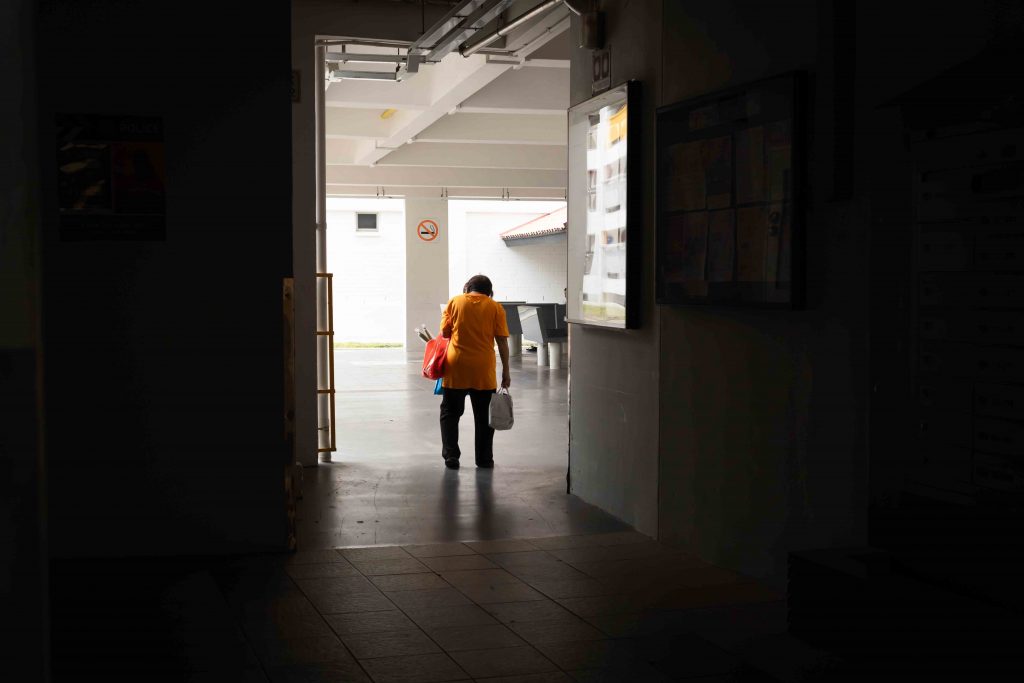
Rachel*, 20, fondly recalls her grandparents “taking her down for brisk walk exercises with the Northwest Brisk Walk Club” almost every weekday evening. Together, they passed through different void decks and sheltered walkways of their residential estate, listening to “aunties telling stories,” sharing laughter and bonding over their time together.
Despite not seeing her grandparents as often now, Rachel treasures the memories of their evening walks under their block and the special bond they shared during those moments.
As I reflected on Rachel’s nostalgic story, I noticed that the void decks had slowly emptied as more people left for lunch. With the afternoon sun blazing without a cloud in sight, the lively chatter and activity of the morning dwindled, albeit momentarily.
Soon enough, some residents opted to enjoy their lunch at the void deck, and others came to sit and rest after their meal. Nonetheless, the void deck remained noticeably quieter than the bustling morning.
As evening gradually descended, the void deck witnessed a return to its earlier vibrancy, completing an entire day’s cycle. Those who left their homes in the early morning were now coming home, with children streaming back from school and adults returning from work, some with groceries in hand.
Unlike the tense rush of the morning, the void deck seemed to buzz with a lighter, more relaxed energy. Some residents even paused to exchange a few words with their neighbours.
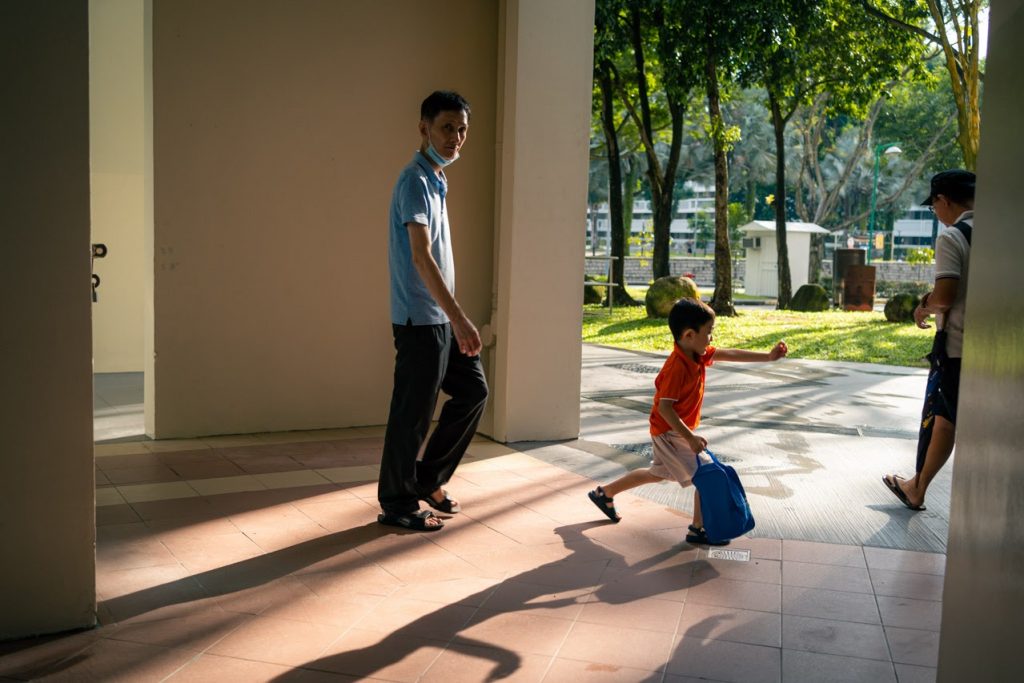
I bumped into Janelle*, 21, who was walking her dog underneath her block. She dedicates an hour three times a week for her dog to roam the “spacious” void deck, which offers ample opportunities for interaction with people and other dogs.
Given that the evenings are Janelle’s “only free time after school and work”, the void deck provides a convenient place for her to spend time with her furry companion while finding solace in the remaining daylight before sunset.
For Janelle, the void deck transitions from a tranquil retreat to a bustling meeting point during the weekend when she brings her dog out for park dates with her friends and their dogs.
While void decks serve as repositories of cherished moments filled with play and laughter, they also witness sombre moments of grief within their empty confines.
Angle*, 22, speaks on how her family has a “tradition of holding funeral wakes under the block of the deceased.” The void deck becomes their preferred venue whenever they bid farewell to their loved ones.
Angle and her family are not alone in this tradition. In Singapore, Chinese funerals are commonly held at void decks. While it is traditionally believed that funeral wakes should be held near one’s home so that “one’s soul could find its way back home,” void decks offer a convenient venue for family members and neighbours to pay their respects.

What Will We Lose?
Though seemingly empty, the void deck is filled with the many stories and memories that dwell within its unassuming facade.
From children’s playgrounds and peaceful rest areas to venues for solemn funerals and celebrations, void decks have evolved into unique sanctuaries that safeguard our most cherished moments.
Given its versatile nature, void decks are one of the few spaces where moments of joy can coexist with grief.
Ironically, the beauty of void decks lies in their emptiness—they are blank canvasses on which fresh narratives can emerge without bounds.
However, traditional void decks are phasing out. Newer flats now no longer feature expansive, open void decks. Instead, massive structural walls and barriers segment the space.
This architectural shift not only confines access to the void deck through designated entry points but also undermines its original purpose as a communal space.
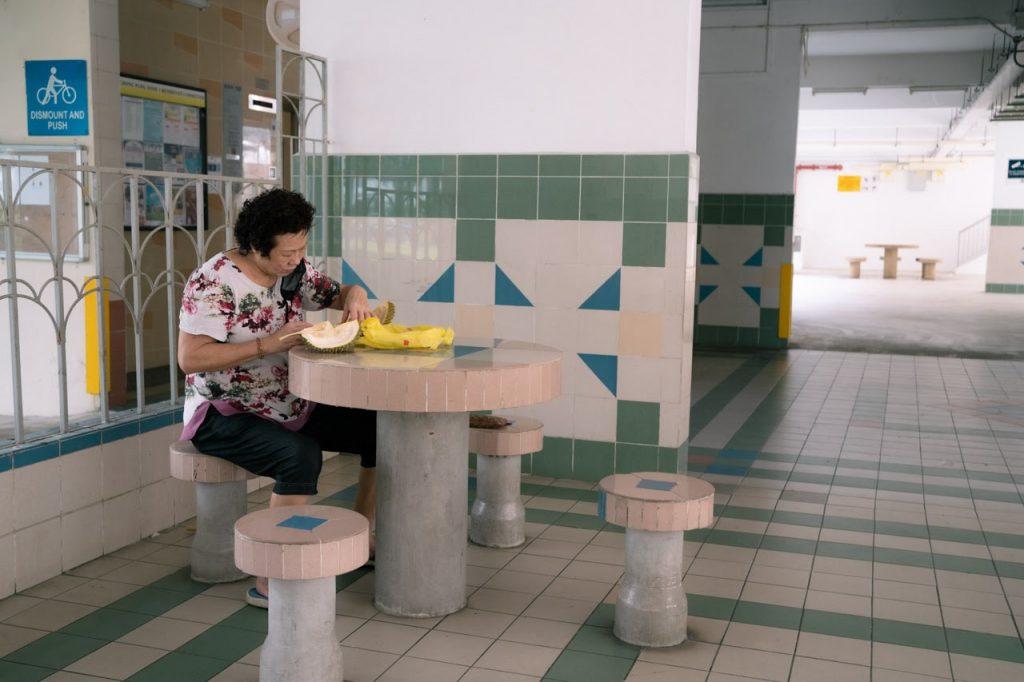
With limited access and convenience, the inviting atmosphere that once drew residents to gather, rest, and converse now lacks allure. Due to the limited space, hosting significant life events like weddings and funerals also poses logistical issues.
At the same time, some void decks have also been completely replaced with spaces such as community gardens and precinct pavilions.
While these changes may seem exciting, a deeper look suggests that they fail to capture the essence and significance of void decks in fostering community belonging and social interactions.
Unlike traditional void decks, which are integrated seamlessly with the pedestrian pathways on the ground floor, rooftop gardens and recreational corners on higher levels lose their spontaneity as locations that necessitate intentional visits.
While these new spaces may serve specific functions, they lack the versatility of void decks, are more restricted in use, and are less conducive for casual gatherings or unplanned interactions.
Parallel to special event rooms found in condominiums, which are also dedicated spaces for social gatherings, void decks share a sense of artificiality that lacks the organic, community-oriented atmosphere that they naturally foster.
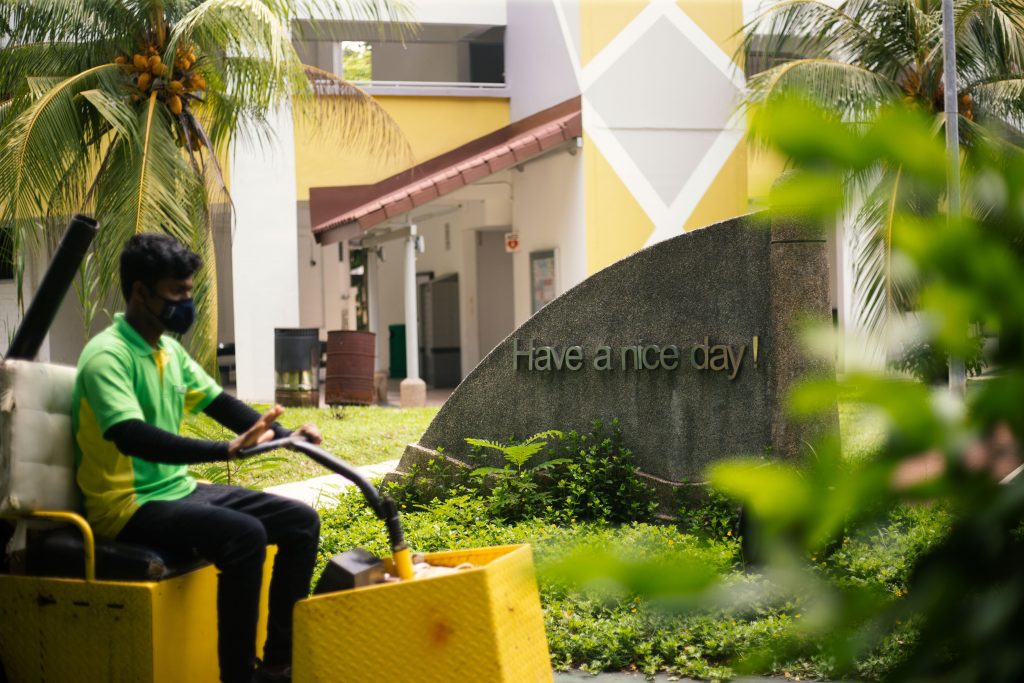
The Void That Remains
Our void decks, with their vast emptiness, possess a beauty that transcends their physical appearances.
While they may not boast the sleek designs of modern community gardens and precinct pavilions, void decks hold their own charm.
It is saddening to see the disappearance of void decks. Without them, we risk losing a fundamental thread of our social fabric.
Cherish these spaces. Do so not just for ourselves but for future generations to experience the simple joys we once enjoyed.
For individuals like me, void decks represent a bygone era of simpler times when the pace of life was slower. I’m filled with nostalgia whenever I remember when I learned how to ride my first bicycle and played with friends until the sun went down.
Even today, void decks hold a special place in the hearts of many. From childhood memories to community gatherings and simple moments of rest, void decks have witnessed our growth and countless stories.
Void decks are where we go for a quick chat with a familiar face or to enjoy a quiet moment of solitude where time stands still amidst the hustle and bustle of city life.
In moments of happiness or sadness alike, void decks offer a watchful but non-judgemental eye.
They may be just empty spaces, but they are filled with the echoes of our past and the promises of our future.

